“Ope! Fish on! Fish on! It’s a big one! Get the net, quick!” Adrenaline pumping, I scramble for the big aluminum fishing net, bumping into at least three other people hoping to be the hero of today’s fishing trip. “Quick! She’s gonna break!” As the fish thrashes just above the surface, I catch a glance at its glistening camouflage. It’s a pike, and it’s a big one, its sharp teeth threatening to slice the line before it even makes it in the boat. As my heart pounds in my ears, I grab the net with both hands and scoop up the biggest catch of the day. My father beams as he carefully unhooks his catch. This is it: the big one!
 Photo by Brady Rogers on Unsplash
Photo by Brady Rogers on Unsplash
Growing up in Wisconsin, the story of ‘the big one’ was a familiar one. There was one nearly every summer, and every time it was told, the wrangling got just a little more dramatic, and the fish got a little bit bigger. You see, with the fish tale, there is just as much craft in telling the story as there is in actually catching the fish.
If you’re wondering what fish tales have to do with spelling, I’ll leave you with a hint: our next spelling rule smells a little ‘fishy.’
Before You Begin
This will be our first silent E spelling rule in a series of rules centered around silent E concepts. Before teaching this spelling rule to your students, make sure they can...
Thoughts on Silent E
Silent E, often called magic E, is one of those elusive spelling concepts that seems to mystify many of our students. It is not uncommon to see a student plop a silent E on the end of a word to make it “look right” without really knowing its purpose. This is why I tell my students that there is ALWAYS a reason for silent E. In this blog post, you will learn the first reason for silent E, so without further ado, let me introduce you to our “fish tale,” Prize Pike.

Here's the Prize Pike Rule:
You see, just like the Wisconsin fisherfolk like to hold up their hands to demonstrate just how long their prize catch was, the silent E will also make the vowel long. I often pair this rule with a two-handed gesture to help students remember that they might use silent E to make the vowel long.
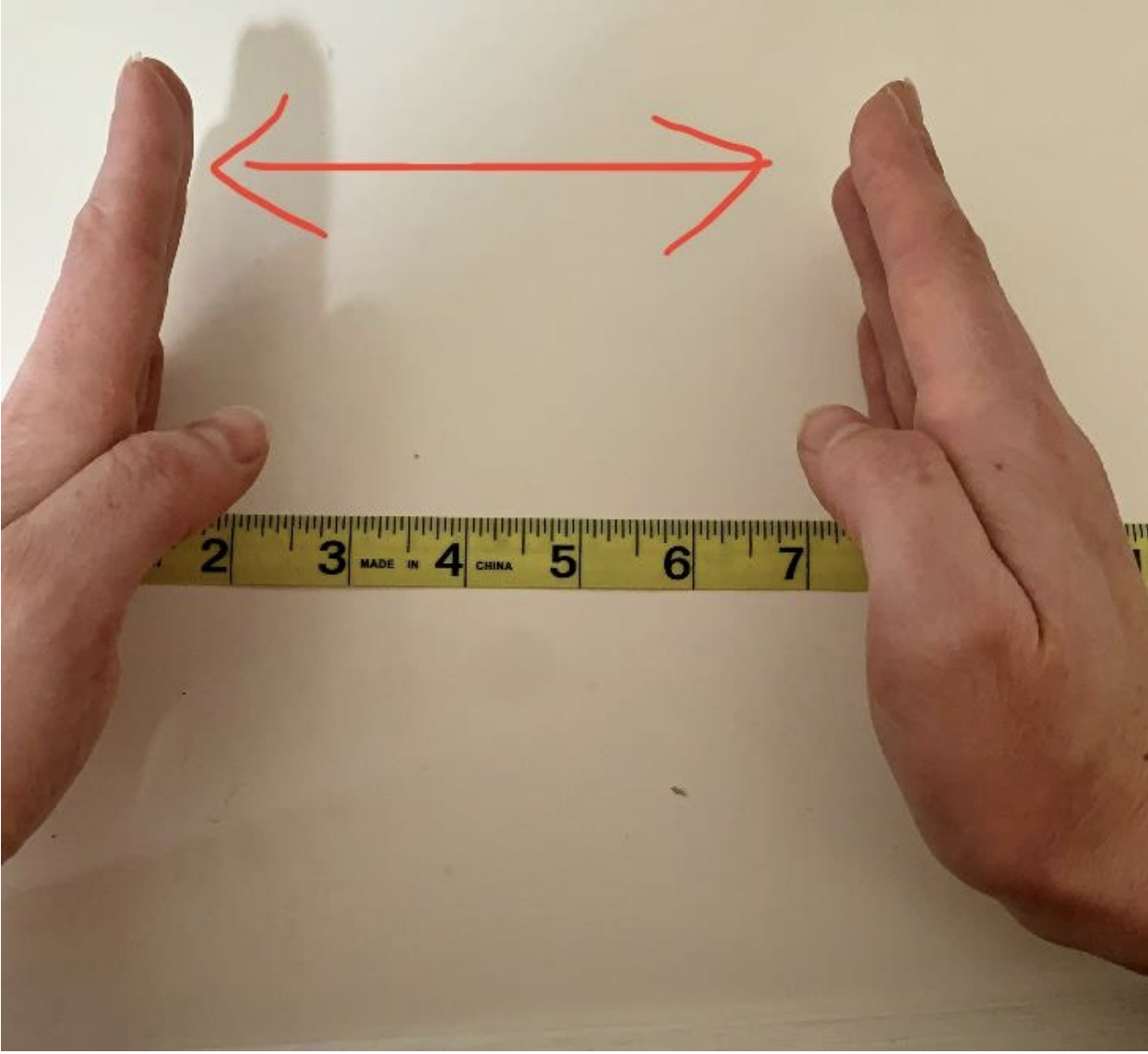
Let's Tell the Whole Story
There’s a bit more to our fish tale that’s important to point out to students. To frame this part of the story, I want you to imagine that you’re wrangling in that prize pike, and there’s a moment where it jumps out of the water before you finally yank it into the boat. Silent E jumps too! Silent E will jump over one consonant to make the vowel in front of it long, but it cannot jump over more than one consonant. Let’s look at an example:
![]()
Notice that the silent E is jumping over the letter ‘k’ to make the ‘a’ long. Now, what if I played with this word a bit and placed two letters after the vowel? Let me show you what I mean...![]()
Now, the silent E can no longer make the ‘a’ long because it can’t jump over two consonants; silent E can only jump over one. Thus, ‘a’ changed back to its short sound. Now, the word, ‘lack,’ also brings up an old rule, but an important rule, Sick Elk. Remember this guy?

If you recall, our Sick Elk rule tells us that after a short vowel, you’ll spell /k/ with a ‘ck,’ such as in the word, ‘lack.’ However, if you happen to hear a /k/ sound after a long vowel, use a ‘k,’ just like we used in the word ‘lake.’
I often give students time to practice spelling words with silent E using a good variety of real and nonsense words with different vowels. You can find some great word lists and practice pages in our Silver Moon Spelling Rules Kit 2. It’s also helpful to prompt students to draw that arrow from the silent E to the vowel that it changes (check out an example of this above).
Tip: You can make this fun by drawing a little fish jumping over that one consonant!
Silent E in Multisyllable Words
Once your student has mastered the smaller, one syllable words, it’s time for them to toss out their lines and yank in the big ones! When working with longer, multisyllable words, it’s important to emphasize the following:

Notice that I did not mark the silent E. Silent E does not count because it is not a ‘voiced’ vowel sound. In other words, if we can’t hear it, it doesn’t count. I often prompt students to put a line through silent E. They may also choose to put an ‘x’ above it to remind them that silent E does not count when we are dividing words into syllables.

Next, I can use my syllable division rules to divide the word into its two syllables, still ignoring silent E for now.

For more on strategies for reading and spelling multisyllable words, check out our free Silver Moon Spelling video library!
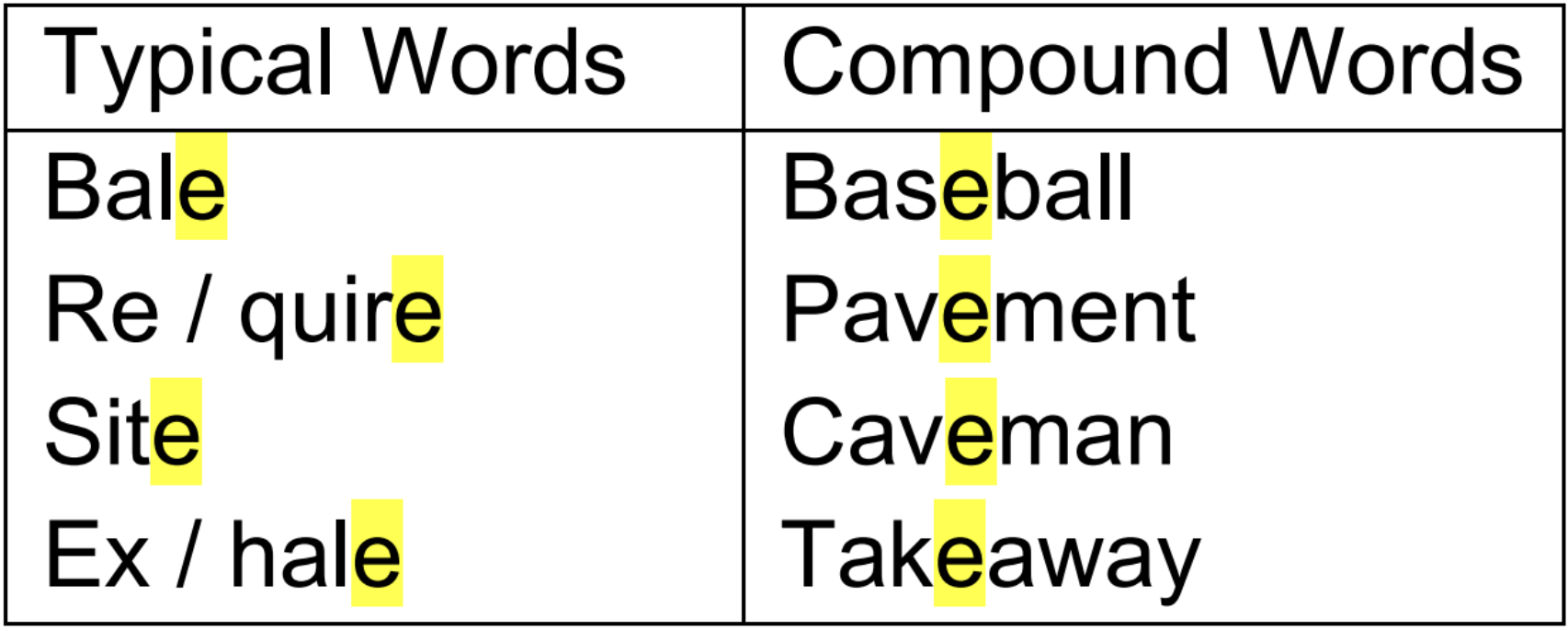
Important Tips to Consider
Time to Pull in the Lines
The sun is setting, and it’s time to pull in the fishing lines and pack up the gear. It has been another successful fishing trip full of fish tales to retell for years to come! I hope you’ve gained some helpful tips for introducing your students to our Prize Pike rule. For additional practice, I’ve provided you with a great set of FREE resources that you can add to the ole tackle box! Simply click, download, and print.
Prize Pike Reproducibles Here!
As always, if you found this blog helpful, please share it with your fellow teachers, parents, and interventionists. Interested in learning more? Check out more of our blogs HERE, and don’t forget to check out our complete guide to spelling at www.Silvermoonspellingrules.com
Happy Teaching!
Written by:
Kate Wagner, BSE
Reading Interventionist, Remote Learning Coach
It may seem wILD, but we are in the last phase of our learning regarding sticky units of sound. Today, we will discover our final, and smallest, unit family, and if you don’t mIND, we will add in a bit of sticky unit review.
 Photo by Charles Wright on Unsplash
Photo by Charles Wright on Unsplash
If you’re reading this and feel kIND of confused, don’t fret! You can catch up by checking out our introductory blog about sticky units of sound. Don’t forget to rejoin us here once you’ve gotten the basics!
Before You Begin
Before teaching these new units to your student, make sure they can…
A Review of Sticky Units of Sound
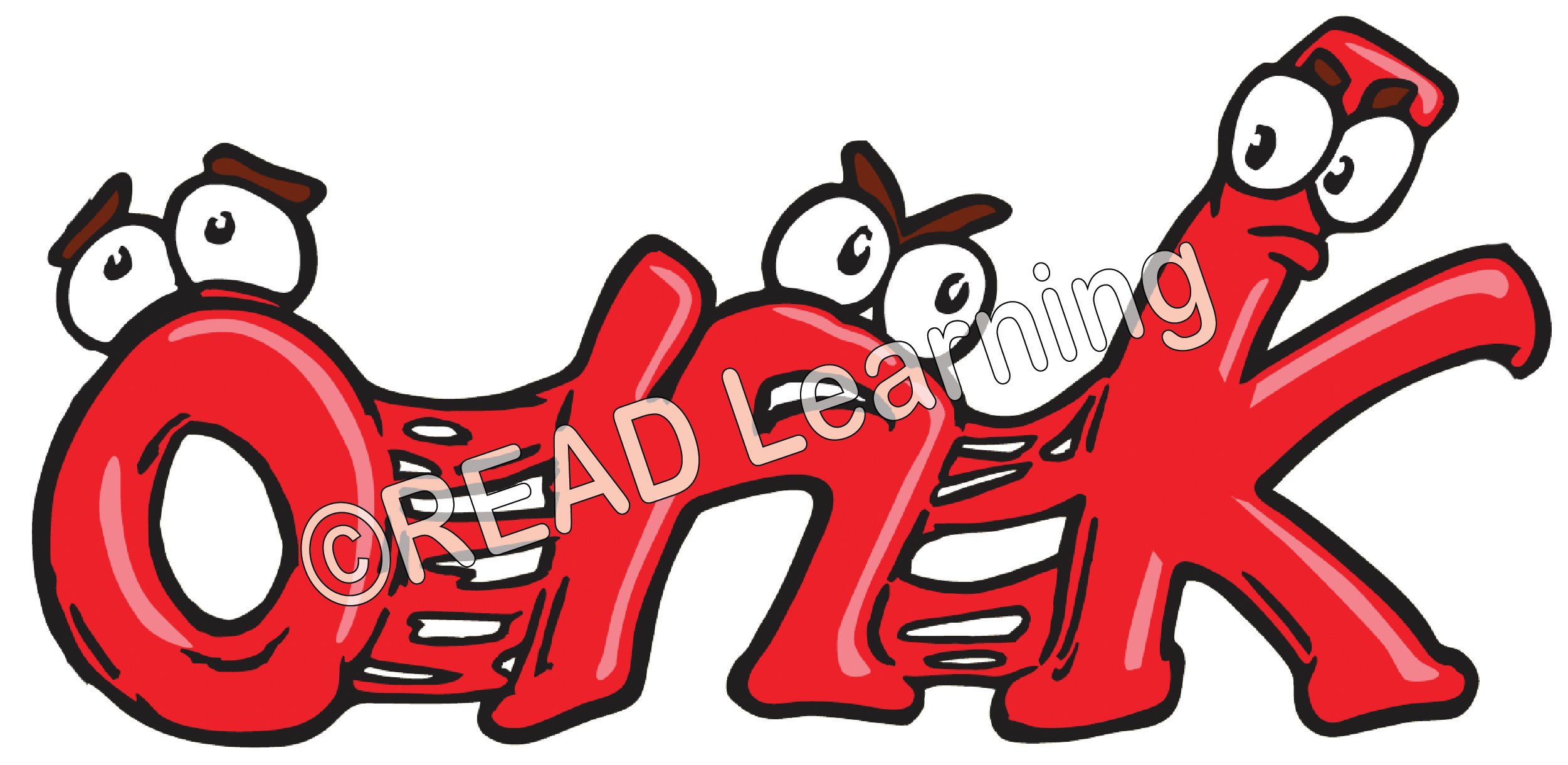
You may remember that sticky units of sound have the following qualities:
-They’re composed of a three letters that make an unusual sound
-They cannot be broken apart into individual sounds (they stick together)
-They form they’re own type of syllable
For the full introduction on sticky units of sound, visit my previous blog post.
Now that we are nearing the end of this sticky situation, I want to review the sticky unit “families” that we’ve already learned before introducing our final family! Check them out in the table below:

Now, at this point, you’re probably thinking, “Gosh, I just wish I had a resource—maybe even a game—to help review these units with my students!” Well, call it a coincidence, but I’ve provided that for you. Keep reading, and you’ll be rewarded with a super cool game to review all of these units at the end of this blog. And now, the moment you’ve been waiting for…the FINAL and smallest family of sticky units!
Meet Our New Family
You may notice that this family is not only small and mighty, but both units start with a long I sound. Remember, it’s important for information-retrieval that we point these commonalities out to our students. Then, it’s essential that we practice, practice, practice seeing, reading, and spelling these units as a part of a larger word like this:
Along with reading them as parts of larger words, begin to build that automaticity of the unit sound by asking your students to “box off” the unit like this:
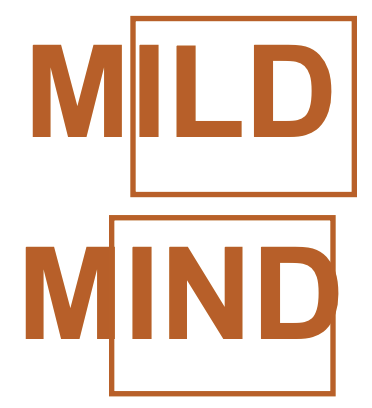
…while tapping one finger for each sound like this:
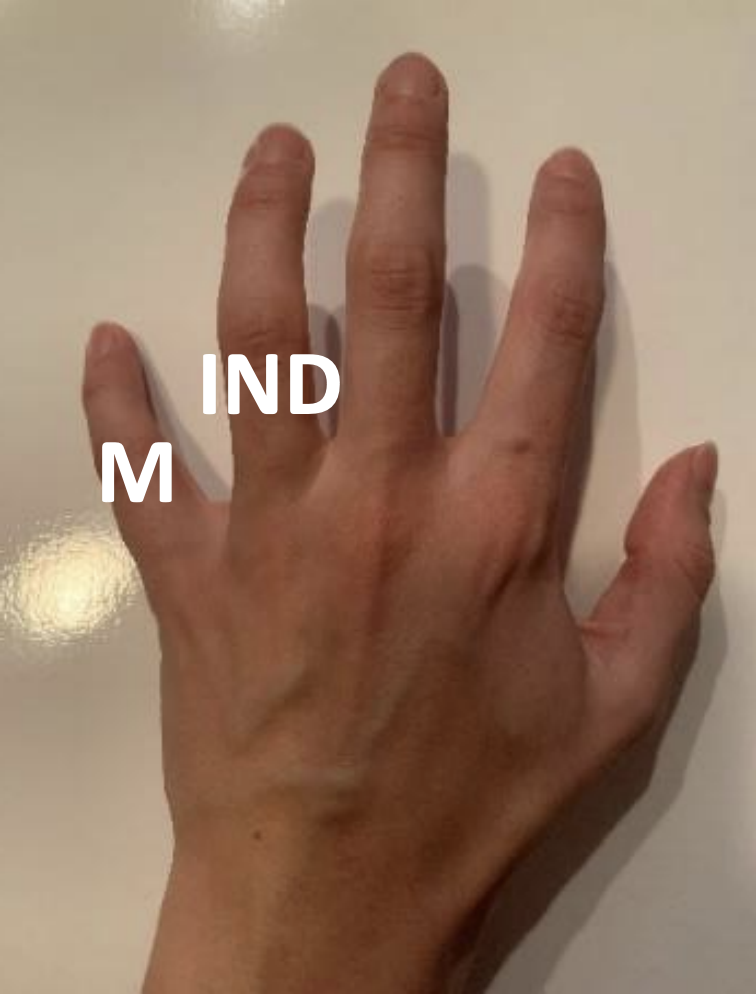
Important Tips to Consider
The key to building automatic recognition of units is to use repetition. Practice reading and spelling words with these units in as many situations as possible. Also practice reading and spelling these units in isolation. Consider practicing by creating rhyming words with the same units!
Make sure ALL of your students have their own student pack of resource cards so they are able to create their own personalized keyword for each unit using the Doodle-a-Rule cards from Set 2. These work well for reinforcing memory pathways.
Your student may struggle to build automatic recognition of these unit sounds right away. To practice this, practice saying words out loud, and ask your student to either write or point to the unit they hear. Then, try the reverse! Point to a word containing a unit, and ask your student to read the word aloud, placing a box around the unit.
Time to Say Farewell
Whew! We’ve done it! We’ve covered our final set of sticky units of sound. Together, we’ve learned how to create order where there once was chaos, and learned some great strategies along the way. And so, I leave you with one final parting gift: FREE resources that can help you and your students work together to review and refine your sticky unit skills. Simply click and download below:
Sticky Units of Sound Long I and Mixed Review Reproducibles
As always, if you found this blog helpful, please share it with your fellow teachers, parents, and interventionists. Interested in learning more? Check out more of our blogs HERE, and don’t forget to check out our complete guide to spelling at www.Silvermoonspellingrules.com
Happy Teaching!
Written by:
Kate Wagner, BSE
Reading Interventionist, Remote Learning Coach
Hey-O! Today, we continue our journey through our sticky units of sound. By now, we have discovered our -NK and -NG unit families and have landed on our next, slightly=blended, family of units: those units that contain the long O sound, plus our unit ALL.
 Photo by Becca Tapert on Unsplash
Photo by Becca Tapert on Unsplash
If you are just joining us in our series on units, let me be the first to say, ‘welcome!’ We’re so glad that you’re here! You also might want to check out my previous two postings, particularly my introduction to sticky units of sound found at this link. There, you will learn everything you need to know about sticky units of sound. After that, come back here to join in the fun. We’ll be here!
Before You Begin
Introducing sticky units of sound to our students in an organized and systematic way is key to getting these units to stick in our students’ minds so that they may use them fluently across settings. Here are some tips to set your students up for success before you begin teaching these new units of sound.
Before teaching these concepts to your student, make sure they can...
A Quick Review
By now, we know that sticky units of sound are important to identify while both reading and spelling because, although they are three (or more) letters, they work together to make one sound that cannot be split into individual letter sounds. They also do not follow our regular spelling patterns, often making unusual or unexpected sounds. Additionally, units form their own unit syllable (more on the 7 types of syllables on our resource here).
 For the full introduction on sticky units of sound, visit my previous blog post.
For the full introduction on sticky units of sound, visit my previous blog post.
Meet Our New Family
Previously, you met two very cohesive families, the NG and NK families of units. This family is a bit more diverse. Here are our new units:
Now, the first four units have one commonality: they all begin with a long O sound. The final unit, ALL, is our “oddball.” You see, it doesn’t really have a family that it belongs with, so it has been adopted by the long O family. Let’s put our new units into words to see them really come to life. Check it out:
Seems pretty straightforward, right? Well, for our students, who already struggle connecting sounds to letters, sticky units of sound can get a bit muddled. Therefore, it’s helpful to have a few tricks up your sleeves to assist them in both recall and generalization.
Working Toward Generalization
When I work with students, there comes a point where I ask them to make a keyword for each unit to help give them an efficient mnemonic strategy. This helps with quick recall when working with these units. Now, there is power in also giving students space to use their creativity. Therefore, my students make both a keyword and a drawing to go with it. We have these lovely Doodle-a-Rule cards in our second set of Silver Moon Spelling Rules which are specifically intended to give students a space to create their keywords and corresponding drawings. Check out this example:
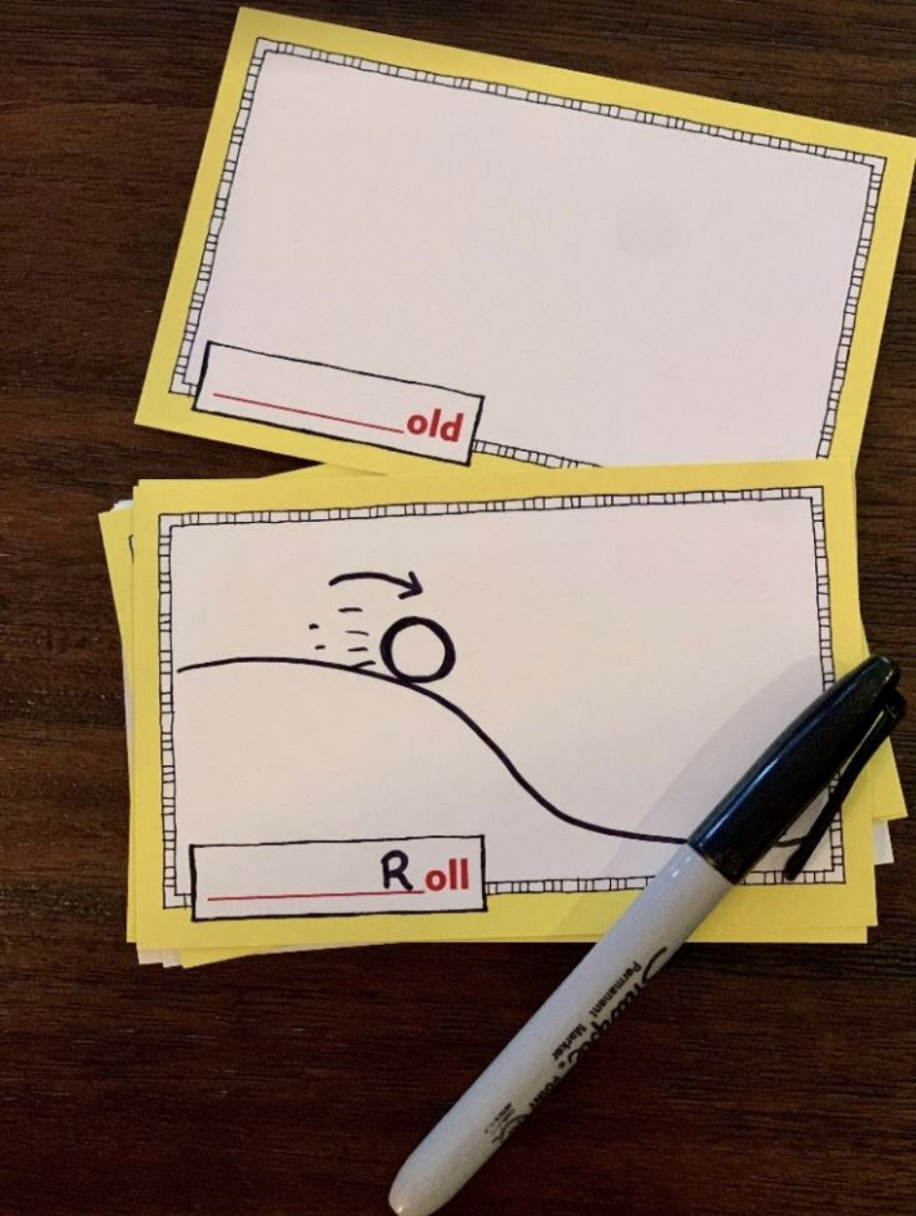 Silver Moon Spelling Rules Set 2: Doodle-a-Rule Cards
Silver Moon Spelling Rules Set 2: Doodle-a-Rule Cards
You can see that the Doodle-a-Rule card had the unit of sound “OLL” on it, and I created the word “roll” as a keyword to help me remember the unit. I also drew a ball rolling down a hill to give my keyword even more life.
What’s better? I use my students’ Doodle-a-Rule cards as flashcards! You’ll find that repetition, like using flashcards, is key to helping students remember their sticky units and build generalization of units in both reading and spelling.
The Multisensory Connection to Generalization and Recall
We know that it’s important to take a multisensory approach to teaching new concepts, particularly when working with a variety of learners, so it’s helpful to also encourage your student to tap out their keywords using just one finger to represent the unit sound. I have more on this strategy in my first sticky unit blog post here. Using this strategy ‘taps’ into three of our senses: auditory, visual, and tactile. It’s important to emphasize the importance of saying the word out loud while simultaneously tapping each individual sound and using a visual.
You see, involving multiple sensory experiences gives the brain more pathways to retrieve the information. Think of it this way: you probably don’t remember every single time you’ve cooked a frozen pizza, but I bet you remember the last time you lost track of time and left it in a little too long. Why? I bet you can picture the burnt hockey puck of that was once your delicious pizza. You can also probably imagine the charred aroma that lingered in the air and maybe even hear your smoke detector going off as you desperately fanned the smoke out the window.
 Photo by Pablo Pacheco on Unsplash
Photo by Pablo Pacheco on Unsplash
The senses build paths for memory retrieval and immediately transport you back to the moment that you had that experience. This is what we are trying to give to our students by involving as many sensory pathways as possible: memory retrieval. Memory retrieval leads to our ultimate goal: generalization.
Important Things to Consider
Let's Wrap it Up!
As we wrap up our discussion on this unusual family of sticky units of sound, I don’t want to send you away empty-handed. If you are a busy parent or an educator, I’m sure you welcome any resources you can get, and I have good news for you. I have some of those coming your way. If you click the link below, you’ll find a set of FREE resources to practice these unit sounds with your student(s). You don’t even have to burn a pizza to get them!
Sticky Units of Sound Long O and All Reproducibles
As always, if you found this blog helpful, please share it with your fellow teachers, parents, and interventionists. Interested in learning more? Check out more of our blogs HERE, and don’t forget to check out our complete guide to spelling at www.Silvermoonspellingrules.com
Happy Teaching!
Written by:
Kate Wagner, BSE
Reading Interventionist, Remote Learning Coach
Hello! We are back with another discussion about sticky units of sound. This is the second blog in our sticky units series, and I thINK you will enjoy what I have to offer you. If you’ve already read my previous posting, I’d like to thANK you for taking the time to navigate that chUNK of learning. If you have yet to check out my first blog in this series, please pause and click on this link. My previous blog will tell you everything you need to know about sticky units of sound.

Now, if you’ve been playing along, you might have noticed some emphasized letters in the last paragraph. It’s no mystery that I’ll be covering our next set of sticky units, so I used words that demonstrated some of our new units in action. Cheesy as it may be, identifying sticky units of sound in their “natural habitat,” that is, within a reading passage, is not only fun to do with educators, but it’s also a great strategy to use with students. In fact, it’s the best way to get students excited about searching out targeted
spelling patterns within everyday contexts, and isn’t that what generalization of knowledge is all about? If you like this sort of activity, I have good news for you! I will be including a similar activity in my FREE set of downloadable reproducibles, found at the end of this blog.
Because sticky units of sound do, indeed, make unexpected sounds, the best approach to helping our students learn them is by providing them with explicit instruction. In
today’s blog, I’ll give you all of the information you need to explicitly teach this family of units, as well as some resources to help your students practice them.
Before You Begin
Before teaching these concepts to your student, make sure they can...
Overview of Units
Today, I introduce you to the -NK family of units. You may recall that sticky units of sound are a combination of letters that:
For the full introduction on sticky units of sound, visit my previous blog post.
Meet the NK Family
Last time, you learned about our first family of units: the NG family. Below, you will meet the NK family. You may be wondering what I mean by “family.” Well, just as folks often point out how much I look like my sisters, each member of the NK family of units also has similar traits. Let’s see if you notice what they have in common. Here they are:
You probably noticed that these new units also have a common theme: they all end with ‘N-K.’ I typically task my students to also discover this connection in a similar way. After that, we begin to form words with our new units by adding a letter in front of each unit. Although it’s helpful to use the same letter to form each word, it’s not always possible. With this family of units, we will try our best to form familiar words even though we can’t use the same letter each time. Let’s give it a try!
Next, I will say each unit out loud in isolation and then ask my student to repeat each isolated unit sound after me. Together, we will look at a list of words containing these units and place a box around the unit in each word like this:
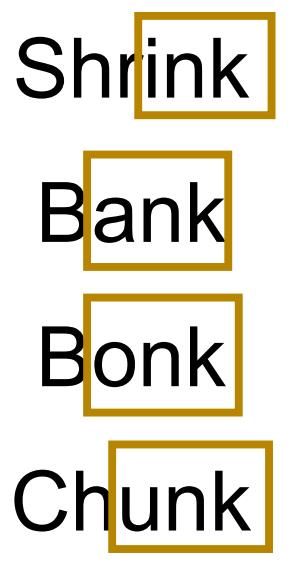
At this point, it’s important to review with our students that each unit is considered just one sound, typically found at the end of a word or syllable but never at the beginning. It’s helpful to practice this concept by asking our students to tap out each word on their fingers while saying the sounds out loud.
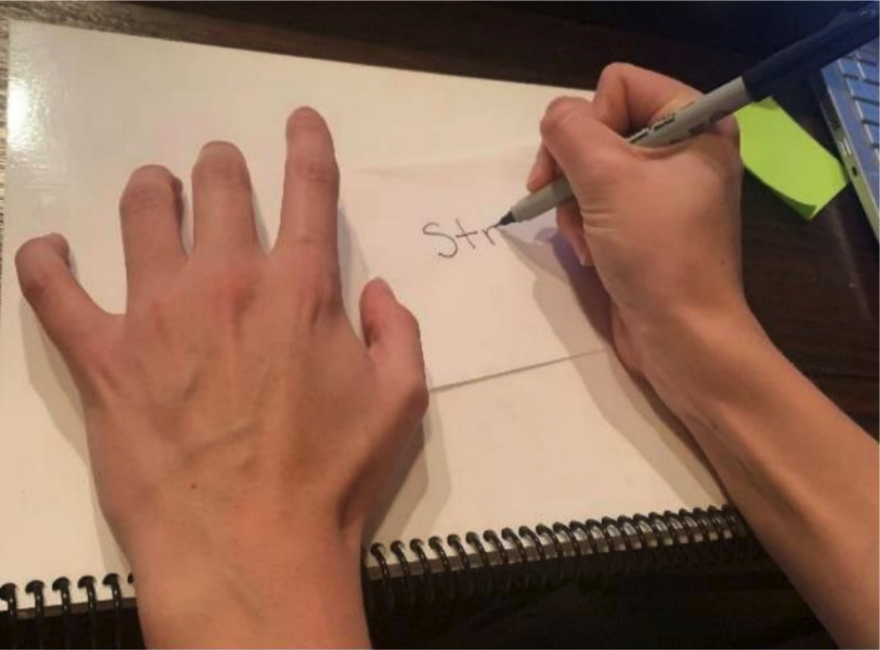
This strategy can be used while reading and while spelling. For step-by-step instructions of these multisensory strategies, see my previous blog post, and check out our website to purchase our instructor manual, complete with more information on sticky units of sound, as well as word lists for additional practice.
Time to Doodle
Once they are comfortable with reading and spelling these new units, it’s important that your student create a resource to refer to each time they get a new set of units. You see, although we teach units of sound explicitly, the list of units tends to add up, and they can be easily forgotten.
This is where the Silver Moon “keyword” comes into play. Now, to put you in the shoes of a student who is accumulating a long list of new units, I want you to think about the last time you had a list of items to get from the grocery store. What are you likely going to do? You’re going to write down that list! Naturally, we all go into these situations with good intentions, making that organized list of needed items, and then, inevitably, you forget that list at home. Of course, you don’t discover this error until you walk through the doors of the grocery store and reach into your pockets only to find old gum wrappers and a piece of lint. Insert facepalm here.
 Photo byTorbjorn Helgesen on Unsplash
Photo byTorbjorn Helgesen on Unsplash
As you scan the aisles of the store, you attempt to remember what was on that list. Then, you begin to create contexts for remembering what we needed. “Hmm...I remember that I had no milk for my cereal this morning, so I definitely need milk.” “Oh! And I know I need eggs for those cookies I need to make for the potluck.” Before you know it, you have placed almost all the necessary items in your basket thanks to the mental contexts you’d created that served as memory triggers for your list of groceries.
Just as we would find it challenging to remember a whole grocery list without any context to trigger our memories, our students may also struggle to remember every unit
they learn without memory triggers for each targeted sound.
Therefore, I ask my students to create a keyword to correspond with each new unit. Then, they create a visual to correspond with each keyword on their Doodle-a-Rule
cards, a fantastic set of resources that can be found in our second set of Silver Moon Spelling Rules. Students can use Doodle-a-Rule cards as flashcards to practice their
unit sounds so they don’t find themselves lost among the aisles.
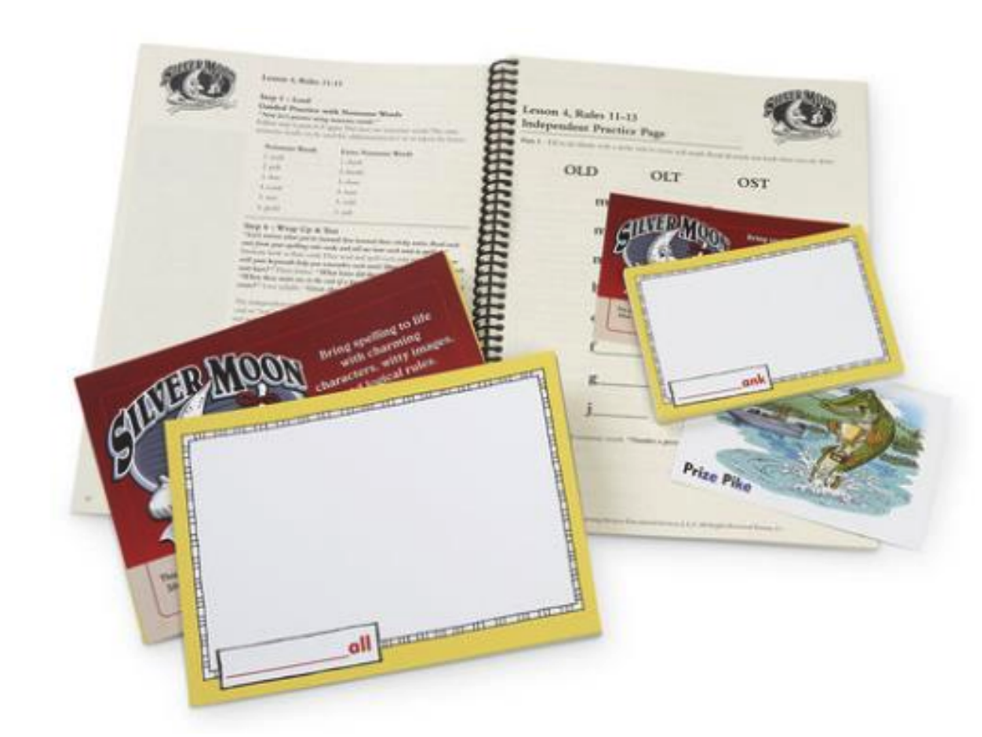 Silver Moon Spelling Rules Set 2: Doodle-a-Rule Cards
Silver Moon Spelling Rules Set 2: Doodle-a-Rule Cards
Important Tips to Consider
And on to the Free Stuff!
And that’s it—easy as pie! We’ve officially covered our second set of sticky units of sound. As a ‘thank you’ for following along, I am providing you with some free, yes
FREE, reproducibles to practice these concepts with your students. Simply click the link below and download!
Sticky Units of Sound Ending with -NK Reproducibles
As always, if you found this blog helpful, please share it with your fellow teachers, parents, and interventionists. Interested in learning more? Check out more of our blogs HERE, and don’t forget to check out our complete guide to spelling at www.Silvermoonspellingrules.com
Happy Teaching!
Written by:
Kate Wagner, BSE
Reading Interventionist, Remote Learning Coach
When I was growing up, we used to have competitions for nearly everything: highest jump, fastest sprint, and even, the longest to hold their breath underwater. So, it’s no surprise that on the occasion we had that delicious, sticky bubble gum, we also would compete to see who could blow the biggest bubble. Well, let me tell you, nothing ruins the fun of a good bubble-blowing competition more than getting your giant, award-winning bubble stuck to your hair. At one point, I was banned from chewing bubble gum, as I had managed to get my hair impossibly stuck one-too-many times.
 Photo by Marlene Bauer on Unsplash
Photo by Marlene Bauer on Unsplash
I tell you this story, not only to serve as a fair warning for those looking to engage in a bubble-blowing battle, but I also want to take this opportunity to segway into today’s topic: “sticky units of sound.” You see, just like hair to bubble gum, sounds can also stick together, making them a bit challenging to read and spell. That’s where today’s topic comes in. My intention today is to give you the tools and the knowledge to teach these sounds to your students so that they don’t find themselves in a sticky situation. This will be the first in a series of four blogs related to sticky units of sound, so let’s dive in!
Before You Begin
Before teaching these concepts to your student, make sure they can…
Overview: What is a Unit of Sound?
Just as bubble gum sticks to hair, units are often composed of three letters that “stick” together to make a strange sound. Why strange? Well, at first sight, a unit looks like a typical closed syllable, meaning the vowel appears to be closed off by a consonant. However, in a closed syllable, the vowel will always make its short sound. In a unit, the vowel may not follow that pattern or any specific pattern for that matter! Therefore, units cannot be sounded out, and they can be pretty tricky if not explicitly taught. The letters in a unit are “sticky” because they can’t be broken apart into individual letter sounds.

Units are very common within the English language. In fact, they are so common, that when a word contains a unit, we describe that word as having a Unit Syllable. Often, we mark those syllables by placing a box around the unit letters. I will show you how this looks later in the blog.
Speaking of syllables, when you’re teaching your students about vowel sounds, it’s also crucial to teach them how to classify syllables in order to build strong phonemic awareness skills. Therefore, we’ve created a fun, FREE resource to help teach syllable types. This resource includes visuals and descriptors of all 7 types of syllables including unit syllables. Included in this resource is the clever illustration of unit syllables above! Check it out on our website at this link.
Sticking to the Subject
There are so many units in our language that it’s easiest to put them into groups or as I like to call them, unit ‘families.’ When we group large lists of items together, it makes them easier to remember. The first four units we cover today is the -NG family. As you’ve probably guessed, each unit in this family ends with -NG.
When I teach units, I begin by showing my student the list of units shown above. Then, I like to ask my student if they recognize any of the units. In this set, students often recognize -ING, as this unit is quite common in high-frequency words. After looking at the units in isolation, I place a letter in front of each unit to create a real, recognizable word and read each word out loud, asking my student to repeat after me. Ideally, I keep the letter the same in front of each unit. It looks something like this:
Next, say each unit out loud in isolation, and ask your student to repeat each isolated unit sound after you. At this point, you may want to introduce a larger set of words that contain these units. Have your student place a box around the unit in each word like this:

Each unit is considered just one sound, so be sure to emphasize this to your student as you read and spell these words. Additionally, guide your student to recognize that units appear at the end of each word (or syllable) and never at the beginning.
The final step is to ask your student to create a “keyword” for each unit. A “keyword” serves as a memory trigger for the targeted sound. Ideally, your student will create a visual to correspond with their keywords. What’s really cool is that our second set of Silver Moon Spelling Rules includes Doodle-a-Rule Cards for students to write and doodle a picture of their unit sound keywords. These handy cards can also work as flashcards to review unit sounds. Click the link above to find out more information on how to purchase Silver Moon Spelling Rules, Set 2.
Multisensory Strategies: Spelling Words with Units
We know that our students learn best when they can involve as many senses as possible. Although reading and spelling naturally involve the senses of sight and hearing, there is a way to also involve the tactile, or touch, sense. When students are spelling, we encourage them to split their words into individual sounds to ensure that every letter and sound is accounted for. Here’s how I have students do that:
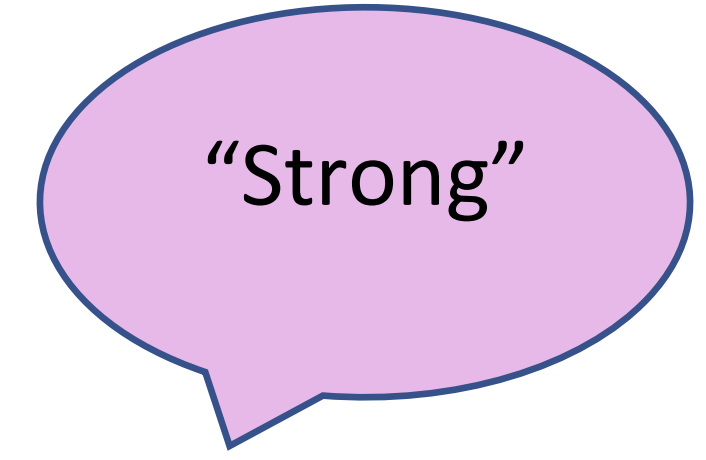
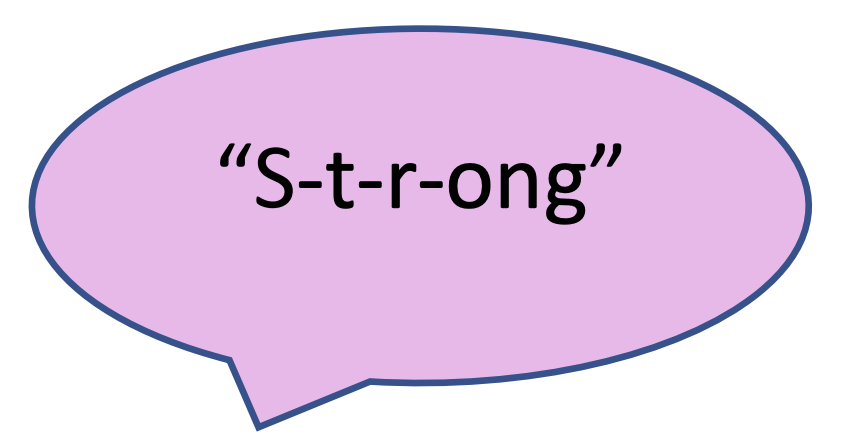 Note: make sure that your student keeps the unit as one sound (“ong” vs “o-n-g”).
Note: make sure that your student keeps the unit as one sound (“ong” vs “o-n-g”).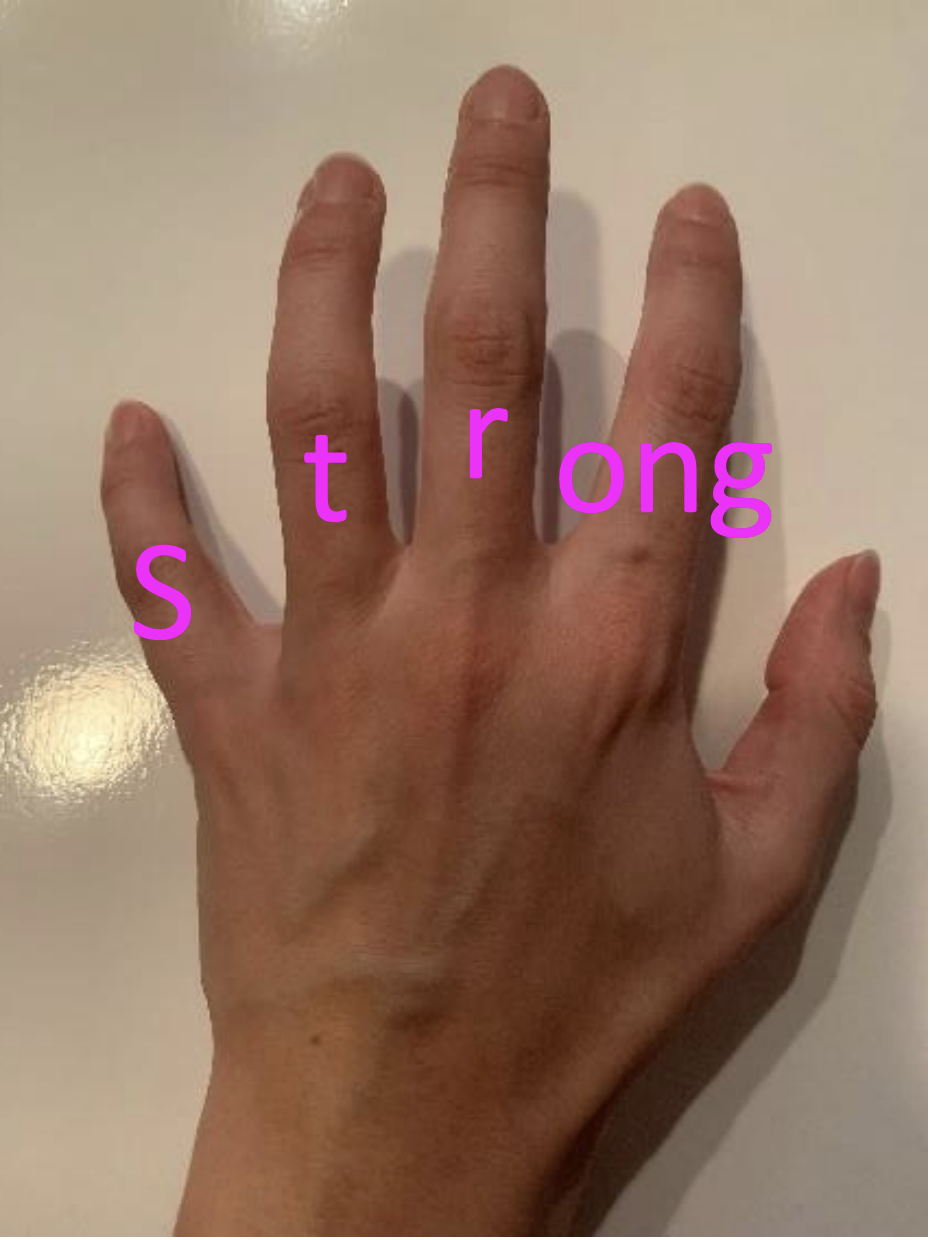 Note: students should tap the sounds using their non-writing hand, leaving their writing hand available for the next step. Lefties will tap beginning with the thumb of their right hand, and righties will tap beginning with the small finger of their left hand.
Note: students should tap the sounds using their non-writing hand, leaving their writing hand available for the next step. Lefties will tap beginning with the thumb of their right hand, and righties will tap beginning with the small finger of their left hand.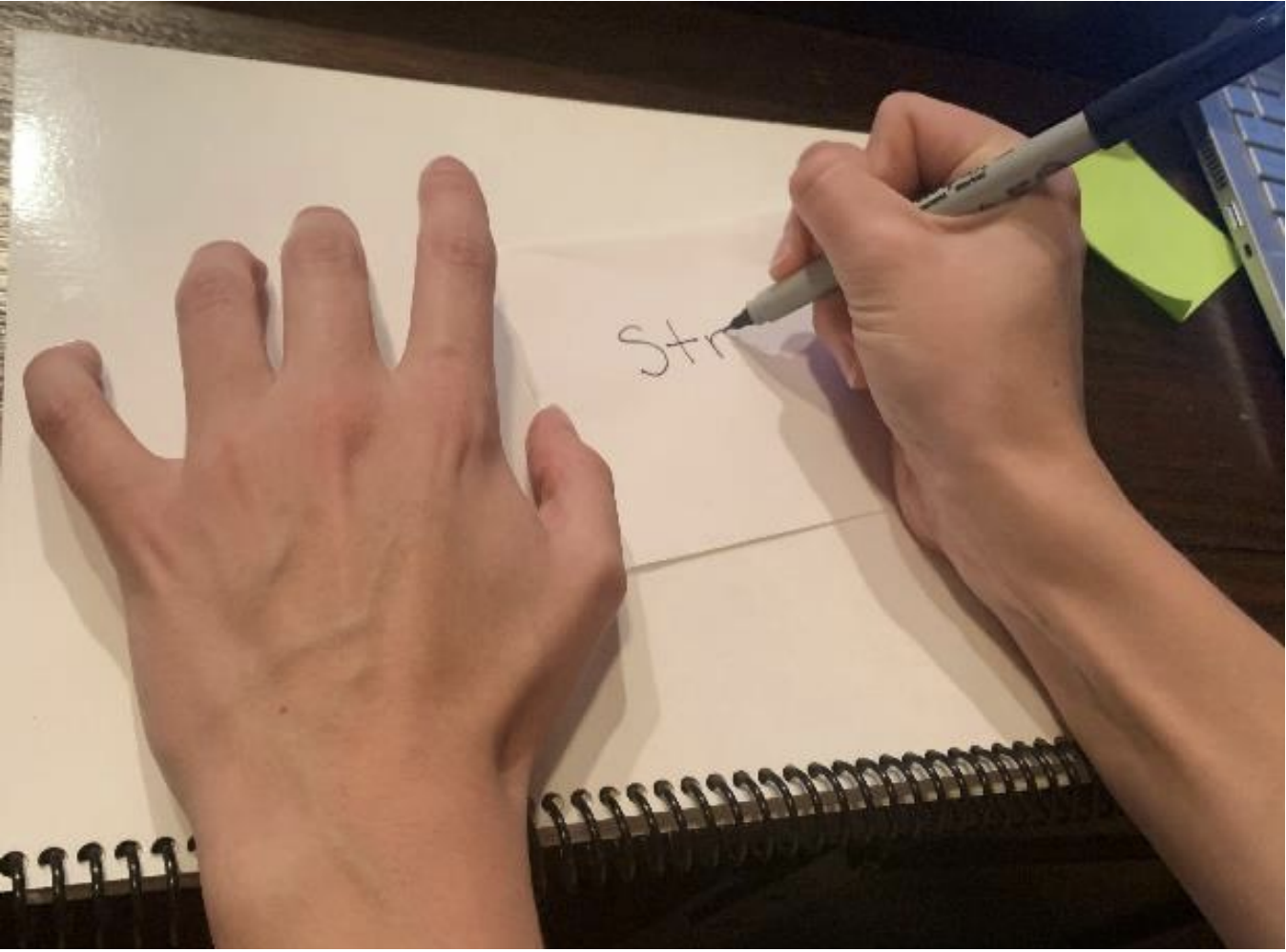 Note: as students get used to using this multisensory spelling strategy, they may choose to do this step simultaneously with step 3.
Note: as students get used to using this multisensory spelling strategy, they may choose to do this step simultaneously with step 3. 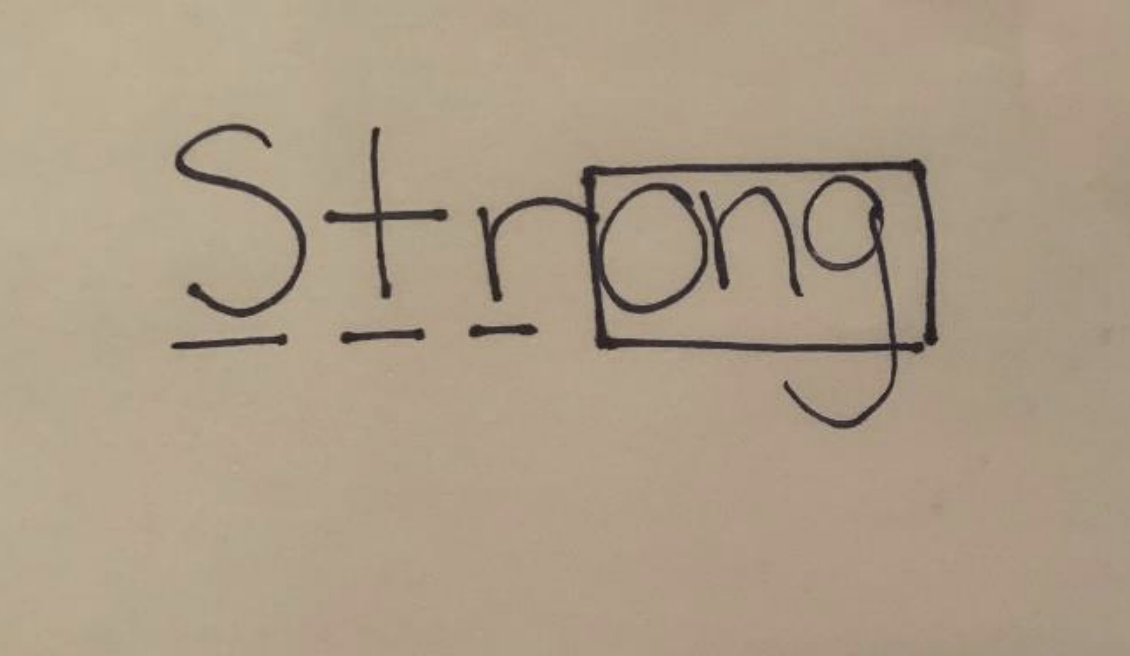 For a video demonstrating this strategy, please check out this link!
For a video demonstrating this strategy, please check out this link! “Stuck” on Reading Units?
Just when you think your student has mastered units, you may find that they still have difficulty transitioning from reading them in isolation to reading them within words. If this happens, I have a strategy to get them unstuck. Ask your student to locate and place a box around the unit first. Next, ask them to read just the unit out loud while checking their keyword to make sure they’ve said the unit correctly. Finally, once they have the correct unit sound in mind, they can read the entire word, tapping under each letter as they go. Using this trick may greatly increase accuracy as your students are learning units for the first time.
For a video demonstrating the touch-and-say reading strategy, please follow this link!
More Important Tips to Consider
One Last Thing
Now that I’ve given you quite a bit to chew on, I’ll leave you with a final surprise. Below, you’ll find a collection of FREE resources to assist in you in teaching these units. Simply pop on over to the link below!
Sticky Units of Sound Ending with -NG Reproducibles
As always, if you found this blog helpful, please share it with your fellow teachers, parents, and interventionists. Interested in learning more? You can find our other spelling topics HERE, and don’t forget to check out our complete guide to spelling at www.Silvermoonspellingrules.com
Happy Teaching!
Written by:
Kate Wagner, BSE
Reading Interventionist, Remote Learning Coach
The final stop on our quest to master schwa will take us to the movies, so pile your crew into the car and get ready to enjoy the latest flick. If you close your eyes, you may just pick up the scent of fresh, buttery popcorn and detect the excited whispers of families settling into their seats as the previews begin to roll.
Recently, we’ve begun our quest to better understand the most common vowel sound in the English language: the schwa sound. We’ve discovered that all schwas say that lazy sound, /uh/, and they must be in unaccented syllables. So far, we’ve learned three different types of schwa patterns. Our Majestic America rule teaches us about the open ‘a’ schwa. We also learned that closed ‘a’ and ‘o’ will make the schwa sound as demonstrated by the Bacon Salad rule. Finally, we discovered that any vowel followed by the letter ‘l’ will change to schwa at the end of a word, and we called this rule Travel by Camel. If you’ve yet to check out these rules, follow the links above to learn more! We will see you back here when you’re done.
Now that the stage has been set, let’s get to our featured presentation!
 Photo by Corina Rainer on Unsplash
Photo by Corina Rainer on Unsplash
Before You Begin
Before teaching these concepts to your student, make sure they can...
Getting Started
This schwa rule is a bit different from the previous schwa rules in that, it is dependent on a word having at least three syllables. Here’s how it works:
Let’s say that I’m trying to spell the word optimist. If I split it into syllables, it sounds like this op/tuh/mist. Hmm...that middle syllable is making a familiar sound. It’s that schwa again! Well, this schwa sound just keeps coming back! It’s almost like part four in a multi-movie series—Schwa Strikes Back: Coming to a blog near you. Alright, back on track.
If we look at that word again, notice that the schwa sound is both open and in the middle of the word. I’ll show you what I mean by using the schwa symbol to represent that /uh/ sound:
Op/tƏ/mist
This is where our new rule comes in. This rule pertains to:
✓ Middle syllables
that are...
✓ Unaccented
and...
✓ Open I’s or E’s
When we see this, we have the perfect conditions for a schwa.
Lights, Camera, Action, Schwa!

That’s right, folks! We’ve reached that point where I reveal our new rule. The name of the rule is Family Cinema, and it echoes the sentiment that we began with—the thrill of going to the movies. Here’s the complete rule:
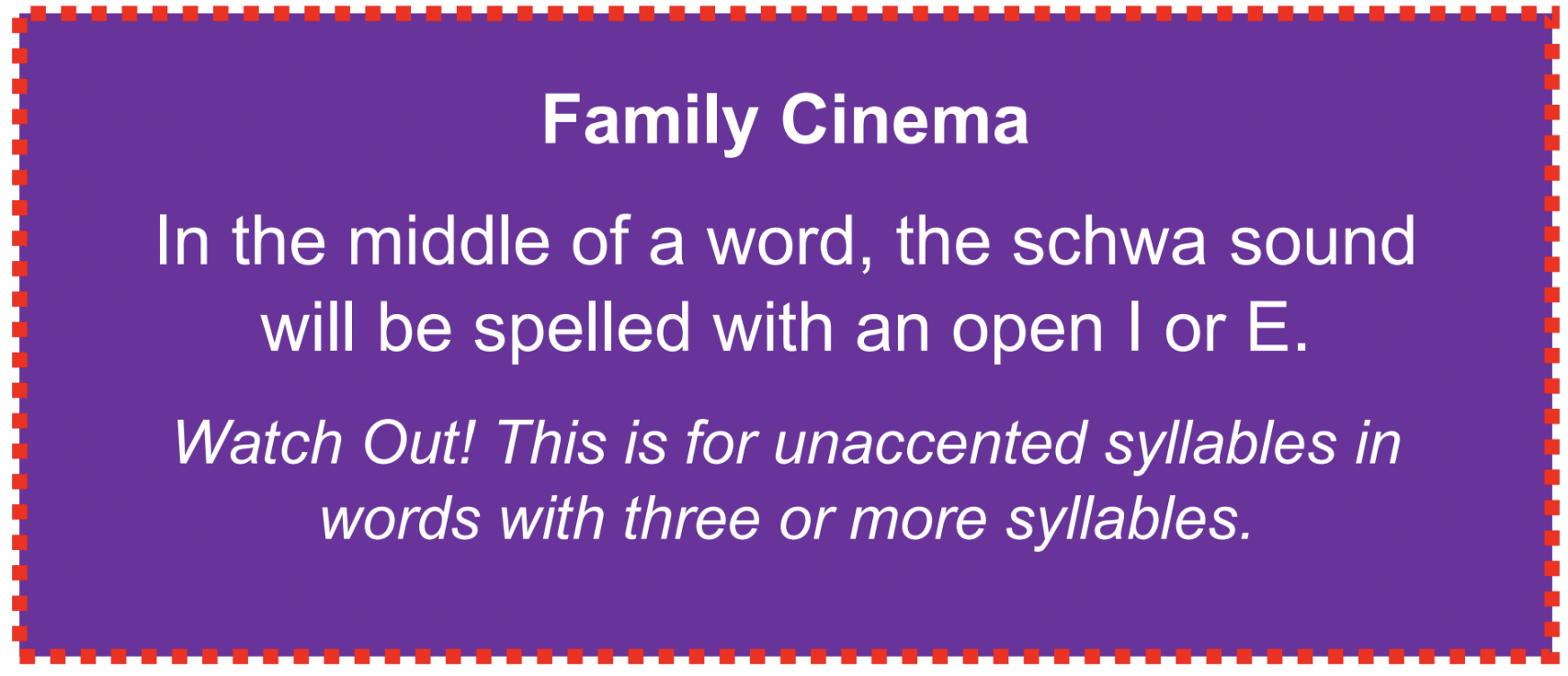
The Scoop on Spelling
As with every schwa, spelling is the hardest part. As we know, all schwas, no matter how they’re spelled, sound the same—/uh/. So how do I know which letter to use when I hear schwa? Well, let’s use some of our other types of schwas to rule out some options. If you’ve been following along with our previous schwa rules, you’ll notice that both Travel by Camel (Ə+L) and Bacon Salad (Ə+ any consonant) won’t work here because these two rules require the schwa to be closed. Majestic America might work, as this rule states that open ‘a’ will change to schwa if it’s unaccented. Hmm...and now our new rule, Family Cinema, tells us that open ‘e’ or open ‘i’ will change to schwa if they’re open, unaccented, and in the middle. In reality, if we hear a schwa sound that’s open and in the middle, it’s difficult to know if it should be spelled with an ‘a’ (Majestic America), an ‘e’ (Family Cinema), or an ‘i’ (Family Cinema).
If you think this sounds familiar, then you really have been following along! This is a similar conundrum that we had in our last blog, so let’s follow a similar format using the word optimist. I am truly a fan of using guided practice like this with my students!
“Optimist. Hmm...I’m going to tap out each syllable.”
“Op—tƏ—mist”
“Now, I’ll just say and spell the first syllable, Op”

“Okay. That was easy! Now, I’ll say and spell the second syllable, TƏ. What I hear is T-Uhh. Whenever I hear an Uhhh sound at the end of the middle syllable, it’s going to be a schwa. I’m going to leave it blank for now and just spell the sounds I know for sure.”

“I’d like to finish the word before I figure out that schwa. Mist. That’s easy too!”
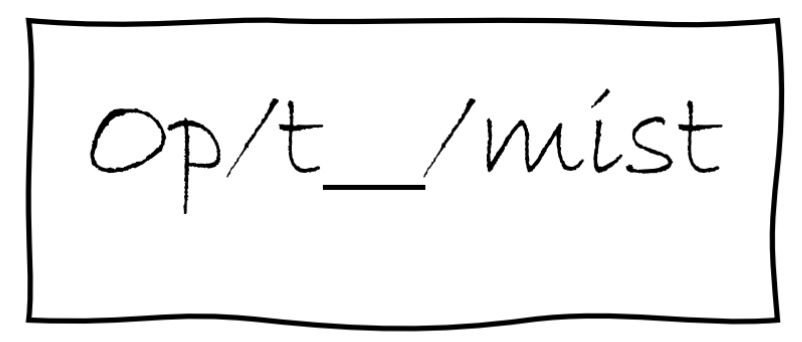
“Voila! Now, I have to tackle that missing schwa letter. I know that I have a couple of schwa rules. Let me see which one fits this word. It’s open and in the middle syllable. I can either choose Majestic America or Family Cinema.”
“I have three choices for spelling this type of schwa, A, E, or I. Which one do I choose?”

This is the point in my teaching where students learn how to effectively use spell check either on the computer or using a spell-checking device to assist in this choice.
“There really isn’t a way to know for sure, so I’m just going to take my best guess. Let’s see how the letter E looks.”

“Hmm...that looks a little strange. Let’s see if I can check it using spell check.”
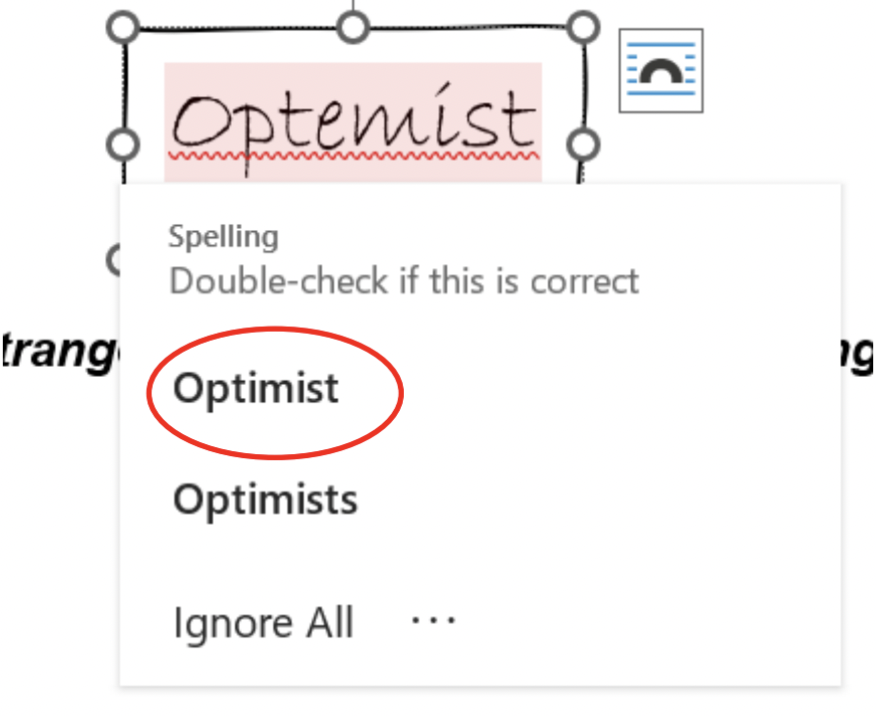
“Okay, great! The first option looks perfect. It must be the letter I that has changed to schwa.”

This thought process can be challenging to teach without the use of modeling, auditory drills, and visuals. If this sounds overwhelming, have no fear! I have the resources to assist you with each of these objectives. Best of all, they’re FREE! This blog is honestly just the preview before the grand finale where I give you—yes, you heard me right—I GIVE you some free reproducibles to practice schwa with your students. Of course, you’ll find even more, including our amazing spelling rule collector cards contained in each of our Silver Moon Spelling Kits.
Important Tips to Consider
As the Credits Roll...
Okay, I know there’s that family in the front who have already begun to put on their jackets and pack up their popcorn, and there are a few antsy folks who have already begun to descend the stairs to leave the theater as the credits begin to roll on the screen. However, you and I both know that there’s usually a little something special
waiting for those who are patient enough to sit through the endless names of cast and crew. The lights are beginning to go up on those who made it to the very end, and here it is—the reward you’ve been waiting for! I have not one, not two, but FOUR pages of free resources to leave you with as you practice schwa with your students. You can find them at the link below.
Family Cinema Reproducibles HERE
As always, if you found this blog helpful, please share it with your fellow teachers, parents, and interventionists. Interested in learning more? You can find our other spelling topics HERE, and don’t forget to check out our complete guide to spelling at www.Silvermoonspellingrules.com . If you need help understanding syllable division rules, see our video section (vlogs) HERE.
Happy Teaching!
Written by:
Kate Wagner, BSE
Reading Interventionist, Remote Learning Coach
Good food and traveling?! How can this blog get any better? Today I’m going to take you on a little trip via an unconventional mode: between the bumps and humps of a camel. Along our journey, we will make one stop for lunch, and you guessed it, we will be enjoying the spoils of a deliciously fresh bacon salad.
 Photo by Jassim Shanavas on Unsplash
Photo by Jassim Shanavas on Unsplash
Perhaps you recall our previous journey across America in my blog about our spelling rule called Majestic America. This discussion centered around the concept of schwa and will help serve as your tour guide for today’s expedition. If you haven’t yet taken that journey, check it out first and return to our hump-backed tour after you’re done.
Before You Begin
Before teaching these concepts to your student, make sure they can...
Photo by Jassim Shanavas on Unsplash
Getting Started: A Brief Review of Schwa
You may remember that schwa comes into play when the regular vowel sound is too difficult to say efficiently. Instead of saying that regular vowel sound, we replace it with the schwa sound to make that word easier to say. Schwa is kind of a lazy sound; it’s the same sound that the short letter ‘u’ makes (uhhh). For a more complete description of this phenomenon, please check out my previous blog about schwa as I describe the Majestic America rule.
Today, I’m going to describe two more schwa rules. To begin, I’d like to try something with you. It’s an approach I use with my students when we are discovering new rules. Take a look at the two lists of words below. I’ve sorted them based on the two schwa rules that we are going to learn today. I’ve marked the vowels changing to schwa in red. In most dictionaries, you’ll see schwas noted with the diacritical schwa symbol: Ə. We’ll circle back once you’ve had a chance to examine the two lists.
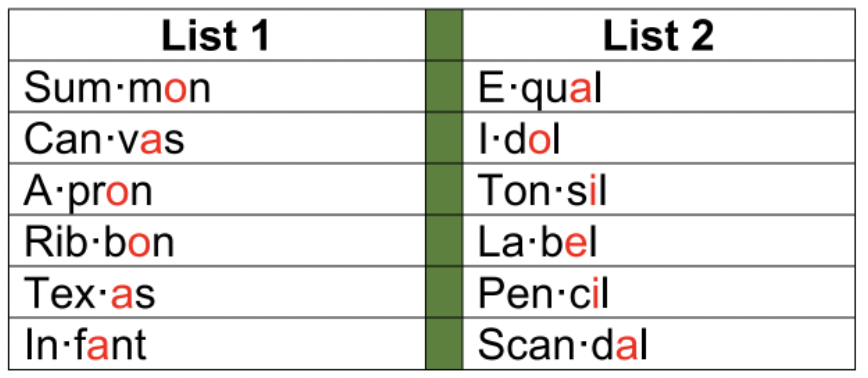
Now, if you were my student, this would be the point where I’d ask you if you noticed any patterns in the letters that changed to schwa. I may guide you by saying:
“Write down the letters that became schwa in List 1.”
Hopefully, you’ve noticed that they’re all O and A.
“Are those open or closed O’s and A’s?”
“That’s right! They’re closed.”
At this point, I would not yet reveal the rule. Instead, I’d move on to the second list, where I may guide my student to notice that those schwas can be several different vowels: O, A, E, and I. They’re also all closed, but specifically, they’re closed with the letter L.
If this is your first time teaching schwa to your student, you’ll have to take some time to talk about accenting. You may recall that schwas can only appear in unaccented syllables. As lazy sounds, they are the product of our need to speak with efficiency. Accented syllables are our first priority and will always follow the regular spelling sounds. Conversely, schwas exist to make those unaccented syllables easier and more efficient to say.
When I’m teaching spelling and reading rules, I like to use this guided discovery approach for several reasons. The first reason is that it simply breaks up the monotonous “teacher talk.” As teachers and parents, we all know the moment when we realize that our students have stopped listening. You know, the Charlie Brown teacher phenomenon where we are no longer saying words of any worth. The second reason for a guided discovery method is that it allows students to take more ownership of their spelling rules. When students feel like they cracked the code to a spelling rule, they’ll be
more likely to remember it!
I know that I promised you a journey with delicious food, and the moment is finally upon us! Let’s take a look at those new rules.
Bacon Salad

As we reflect upon the two lists of words that we’d examined above, our fresh, crispy Bacon Salad rule corresponds perfectly with List 1. Just as we had discovered, this rule is all about the closed and unaccented O’s and A’s. Here’s our complete spelling rule:
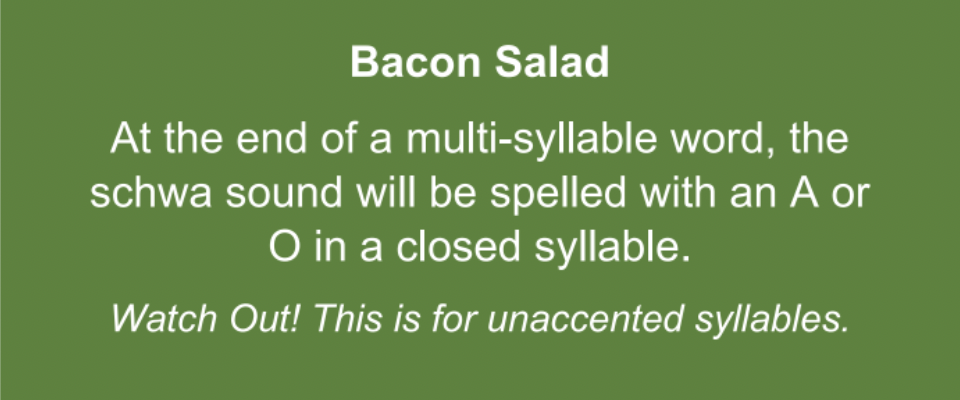
Notice that the name of the rule, Bacon Salad, models exactly what this rule is all about. The biggest takeaways from this rule are: 1. This schwa is closed and 2. The only two letters that can change to schwa for this rule are O and A. Therefore, if your student notices a closed O or a closed A in the second syllable of a word, prompt them to recognize that there is likely a schwa in that word.
After such a delicious meal, I think we are ready for the next phase of our adventure!
Travel by Camel

Our Travel by Camel spelling rule corresponds to List 2 of the words presented above. This rule is a bit more complicated because there are more options for spelling schwa than there were for our previous rule. In fact, any vowel can change to a schwa if it’s unaccented and closed off by the letter L. Here’s what this rule looks like:
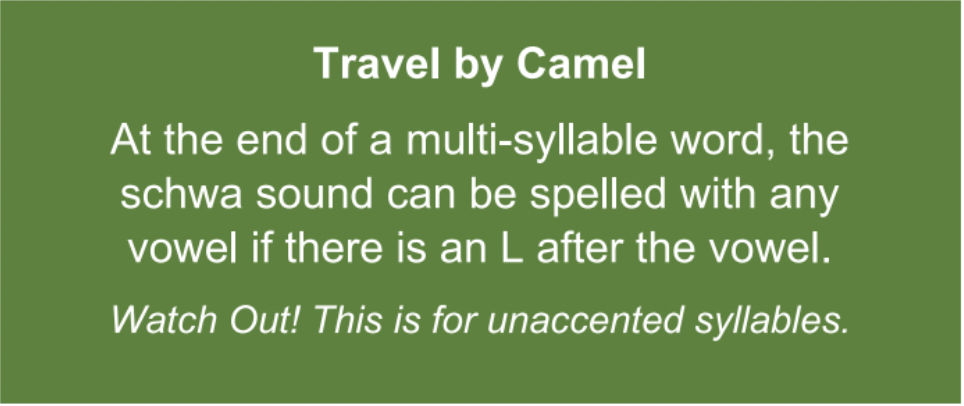
Make sure that you point out that whenever your student sees a vowel+L pattern at the end of a word, they should think about the schwa sound.
Pretty simple, right? Well, not exactly. The toughest part about schwa is getting students used to recognizing their spelling choices when they come across a schwa. I do a lot of thought-process modeling for students to encourage them to build strong problem-solving skills. For example, let’s say I’m trying to spell the word ‘Wagon.’ Here’s the thought process I would model for my students.
“Wagon. Hmm...I’m going to tap out each syllable.”
“Wa—gon”
“Now, I’ll just say and spell the first syllable, Wa”
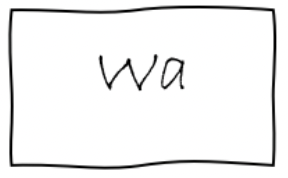
“Okay. That was easy! Now, I’ll say and spell the second syllable, Gon. What I hear is G-Uhh-N. Whenever I hear an Uhhh sound in the second syllable, it’s probably going to be a schwa. I’m going to leave it blank for now and just spell the sounds I know for sure.”
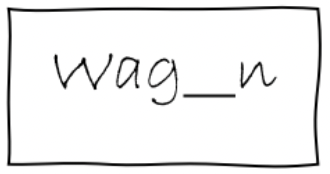
“Okay, that was easy too. Now, I have to tackle that missing schwa letter. I know that I have a couple of schwa rules. Let me see which one fits this word. It’s closed off by the letter N, and it’s at the end. It must be Bacon Salad!”
“I have two choices for spelling this type of schwa, O and A. Which one do I choose?”

Now we have come to a crossroads. There really is no way of knowing for certain which letter to use for spelling each of these schwa sounds. The good thing is that there are two tools to guide students’ thinking about schwas. The first is that the spelling rule itself certainly narrows down their spelling choices. In the example above, there are only two choices for spelling a Bacon Salad schwa: O or A. The second tool that students begin using is spell-check. This could be in the form of an embedded spell-checking tool in a word processing program, the dictionary, or a portable electronic spell checker. Here’s how I model this conundrum:
“There really isn’t a way to know for sure, so I’m just going to take my best guess. Let’s see how the letter A looks.”
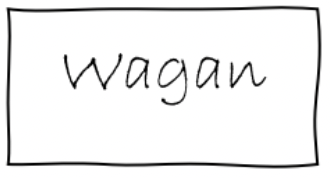
“Hmm..that looks a little strange. Let’s see if I can check it using spell check.”
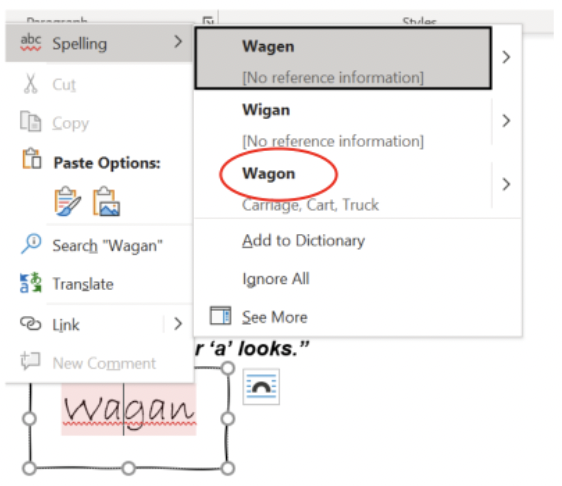
“Okay, great! I can tell that the first two options don’t work with the word or for my spelling rule, so it must be the third option down, W-A-G-O-N.”
I would likely repeat the same thought-process modeling with a Travel by Camel word. Of course, this one is tricky because students will have many choices for filling in that schwa blank! However, if you make it to the end of our journey, you’ll be rewarded with a great thought map as part of our FREE reproducible that you can use with your students to guide their thinking. They can be found at the end of this blog.
For additional practice, I like to walk my students through a series of visual and auditory drills to reinforce the sound for schwa, as well as how to spot it in a word. Don’t forget that there are many more quick and easy activities in our Silver Moon Spelling Kit!
Important Tips to Consider
As We Wrap Up Our Journey...
The salad has been munched, and our trusty camel crew has taken us to the end of our journey. Now that we’ve unpacked these rules, it’s time to unpack our bags and give them a try! Below, you’ll find an itinerary full of helpful activities for you and your student to practice each of these spelling rules, and unlike an action-packed vacation, they’re FREE! Check them out at the link below.
Bacon Salad and Travel by Camel Reproducibles Here
As always, if you found this blog helpful, please share it with your fellow teachers, parents, and interventionists. Interested in learning more? You can find our other spelling topics HERE, and don’t forget to check out our complete guide to spelling at www.Silvermoonspellingrules.com . If you need help understanding syllable division rules, see our video section (vlogs) HERE.
Happy Teaching!
Written by:
Kate Wagner, BSE
Reading Interventionist, Remote Learning Coach
The queen wanted a quick fix to the ‘Qu’ query. You see, everyone was asking her why she never did anything without her loyal ‘U,’ and quite frankly, she quaked at the thought of being without her ‘U’!
I wonder if you’ve caught on to my quips, but if you haven’t, we are going to be exploring the ‘Qu’ spelling pattern. Additionally, we will explore two long vowel sounds that ‘U’ can make.
Make sure your student can...
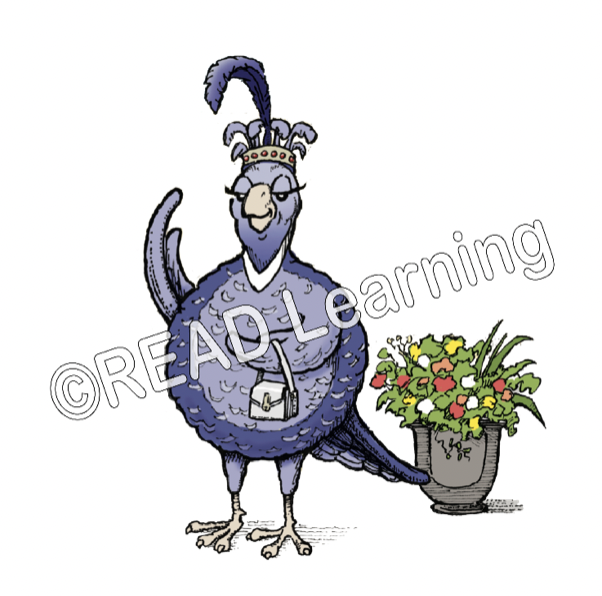
And now to introduce you to her majesty, Queen Quail. It’s important to teach your student that the letter ‘Q’ cannot stand alone without the letter ‘U.’ What’s especially fun is to recreate our story about Queen Quail and her faithful bodyguard, the letter ‘U.’ Begin by having your students visualize royalty out in public.
“Imagine the queen surrounded by her court. The letter ‘U’ is the head of her court. He is her faithful bodyguard and always comes with her wherever she goes. So whenever you’re spelling a word, always remember to add the ‘U’ after the queen. Her bodyguard will always follow after her—wherever she goes.”
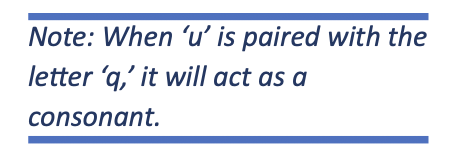
The next step is to reinforce the sound that ‘Qu’ will make. ‘Qu’ is kind of a combination sound that sounds like /kw/. When you teach this concept, practice saying the correct sound while showing a visual of the letters ‘Qu.’ Then, have your student do the same! It’s helpful to also ask your student to write the letters as they say the sound.
And that’s it! Although this seems like a simple concept, it can be tricky for students to immediately demonstrate automaticity without repetition, so get ready to find creative ways to practice. The good news is, I have some free activities at the end of this blog to help with that practice!
Now, if you look closely at our Queen Quail, you’ll notice some hidden surprises in the picture that serve as fun reminders of the rule. Speaking of, here’s the complete rule:
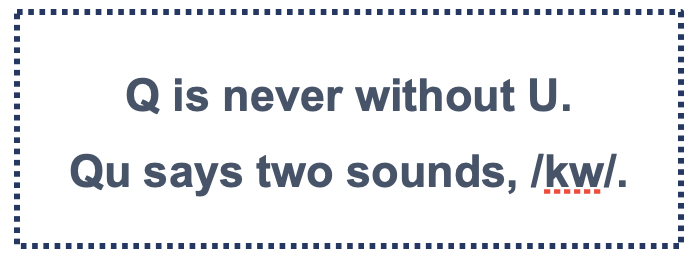
Of course, we all know that the letter ‘U’ can also appear on its own. For this next rule, make sure your student knows their short vowel sounds. Explain that when a vowel is closed off by a consonant, it is called a closed syllable, and the vowel will likely be short. Such as in this word:

However, when a vowel is not closed by a consonant, it will make its long sound. Now, most vowels have just one long sound, but the letter ‘u’ has two long sounds. Let’s take a look at our new rule to understand those two sounds a bit better.
![]()
What I love about our spelling rules is that their names help us understand exactly what they’re all about. I’ll show you what I mean. When the letter ‘u’ is open, it can make two sounds. The first sound is /oo/ as in the word ‘Emu.’ The second sound says /ū/ as in the word ‘Menu.’
I’m sure you’ve been wondering if there is a fun picture to go with our Emu on the Menu rule. There is! I was saving it for last!
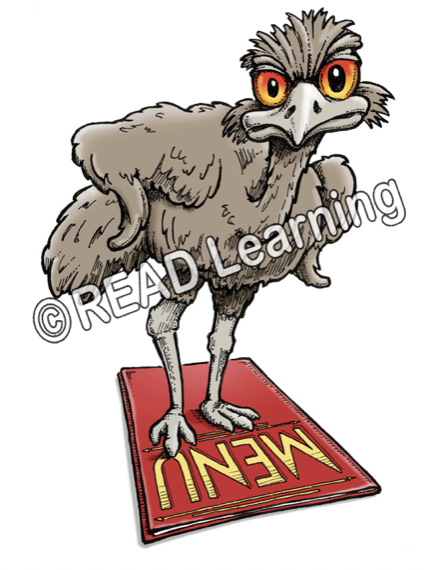
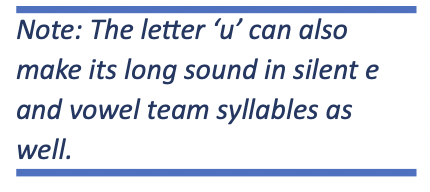
This allows you to focus on what matters most: learning and applying the rule. I highly suggest the Silver Moon Spelling Rules cards complete with illustrations for this rule. Both student and instructor sets of cards can be found here.

You can encourage your student to mark their vowels long or short. With ‘Qu,’ I often encourage my students to underline or box the two letters together, as to reinforce that ‘u’ is acting as a consonant, rather than a vowel. Check out our instructional video to get more tips and tricks for teaching syllable division techniques here!
You may find that students have learned to memorize a lot of words. This is especially common when working with older students. Therefore, it’s difficult to know for sure if your student has really learned the spelling rule to the point of generalization (note that this is the ‘good kind’ of generalization). Using a mix of real words and nonsense words helps you better understand what your student knows and eliminates the memorization variable.
Creating sentence frames are another good way to fade supports while practicing a spelling rule. You can find sentence frames for each rule in our FREE resources below.
Now that we’ve come to the end of our exploration of ‘U,’ I’d like to share some practice resources with you. When working with these concepts, practice will build automaticity. Our free reproducibles can help jumpstart your teaching practice.
Queen Quail and Emu on the Menu Reproducibles Here
Happy Teaching!
Written by:
Kate Wagner, BSE
Reading Interventionist, Remote Learning Coach
The Huge Hedgehog

This rule is a follow-up to the Gentle Giraffe rule. It involves this spunky, slightly huge, hedgehog! Because words in English cannot end with the letter J, it’s important to let your student know that when they hear /j/ at the end, they must choose a different spelling. To introduce this spelling rule, it’s helpful to spend some time reviewing short versus long vowel sounds. This concept is the building block to the huge hedgehog rule. This rule works similarly to spelling words that end with /ch/ using the spellings CH and TCH. To learn more about this rule, visit our blog called Munch a Batch of Cookies.
As we revisit our furry friend, we can use the name of his rule to help us to understand what’s going on with this rule:
Hūge Hĕdgehog
Notice that /j/ is spelled with GE when it follows a long vowel, while /j/ is spelled with DGE when it follows a short vowel. It’s that simple! Let’s look at that complete rule:

Important Tips to Consider
Students often accidentally pronounce DGE as /d-j/, so I like to practice reading both GE and DGE by writing them on index cards. Then, I alternate pointing to them as my student reads each sound.
This allows you to focus on what matters most: learning and applying the rule. I highly suggest the Silver Moon Spelling Rules cards complete with illustrations for this rule. Both student and instructor sets of cards can be found here.
You may find that students have learned to memorize a lot of words. This is especially common when working with older students. Therefore, it’s difficult to know for sure if your student has really learned the spelling rule to the point of generalization (note that this is the ‘good kind’ of generalization). Using a mix of real words and nonsense words helps you better understand what your student knows and eliminates the memorization variable.
Creating sentence frames are another good way to fade supports while practicing a spelling rule. You can find sentence frames for each rule in our FREE resources below.
One More Giant Surprise
Now that I’ve introduced you to both rules, perhaps you’ll feel more confident in unraveling the mysteries of G with your students. Of course, it helps to have two adorable characters to reference in the process. I’m sure you’re asking yourself, ‘how can this get any better??’ Well, it gets better. To help you and your students practice these two new rules, I’ve created a set of FREE activities that you can simply click, print, and teach! Enjoy them at the link below:
Huge Hedgehog Reproducibles Here
As always, if you found this blog helpful, please share it with your fellow teachers, parents, and interventionists. Interested in learning more? You can find more spelling topics HERE, and don’t forget to check out our complete set of teaching resources at www.Silvermoonspellingrules.com.
Happy Teaching!
Written by:
Kate Wagner, BSE
Reading Interventionist, Remote Learning Coach
Let’s start with a scenario. I am working with a student on the basic letter sound correspondences, and I get to the letter G. I don’t know about you, but this is one letter sound correspondence that makes me hold my breath. Why? Let’s reenact a conversation that I’ve had many times while showing students the letter G:
“What is the most common sound for this letter?”
“/j/”
“Hmm…that’s one sound it can make, but that’s not the most common sound.”
“Really? But what about the in words, ‘giraffe,’ or ‘gem’? I hear G make that sound all the time!”

Now, I’m sure we all recognize that this student isn’t entirely wrong. In fact, they have some good foundational skills for the rule that I’m about to show you. However, with this student, I’ll hold back on teaching the less common sound for G. You see, students working on the most common phoneme-letter correspondences aren’t quite ready for alternative letter sounds, and of course, the alternative letter sound for G is /j/, while the most common sound for G remains the /g/ sound as in the word “goat.”
It may sound like I’m backtracking on our primary focus for today, but if we look at the big picture, it’s important to recognize that reading and spelling concepts should get introduced at just the right time in a student’s learning. When introduced too early (or too late), it can lead to confusion and slow student progress.
Prior to studying systematic spelling and reading strategies, the scope and sequence of teaching these concepts (the order in which we teach them) was a bit lost on me. Thankfully, we’ve made it easy to see where you were and where you’re headed as a teacher with our easy-to-follow Silver Moon teaching guides. You can find all three sets on our website here. To extend my little soapbox on scope and sequence, I have a quick checklist for you to consider prior to teaching the spelling and reading rules about G’s alternate sound.
Before You Begin
Make sure your student can...
The Gentle Giraffe Loves Gym

Now, on to the rules you’ve been waiting for! Meet our first friend, the gentle giraffe. As you can see, the gentle giraffe is all about getting in his daily workout at the gym! While he finishes his workout, let’s explore what his rule is about. This reading rule reminds us that G can make a secondary sound when it is directly followed by an e, i, or y. G’s secondary sound is called it's soft sound, and it sounds just like the letter J. It says /j/. Notice that the name of this rule helps us to see an example of each ssseaky vowel changing the sound of the letter G. Check it out!
Gentle Giraffe Loves Gym
Here’s the complete rule:

Check out the Gentle Giraffe reproducible HERE.
As always, if you found this blog helpful, please share it with your fellow teachers, parents, and interventionists. Interested in learning more? You can find more spelling topics HERE, and don’t forget to check out our complete set of teaching resources at www.Silvermoonspellingrules.com.
Happy Teaching!
Written by:
Kate Wagner, BSE
Reading Interventionist, Remote Learning Coach